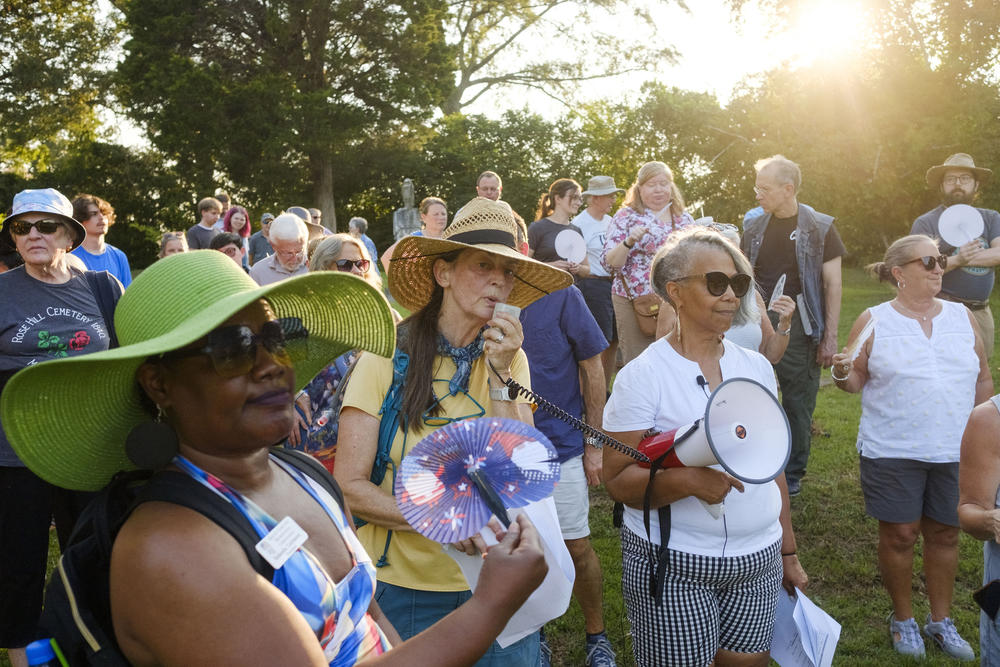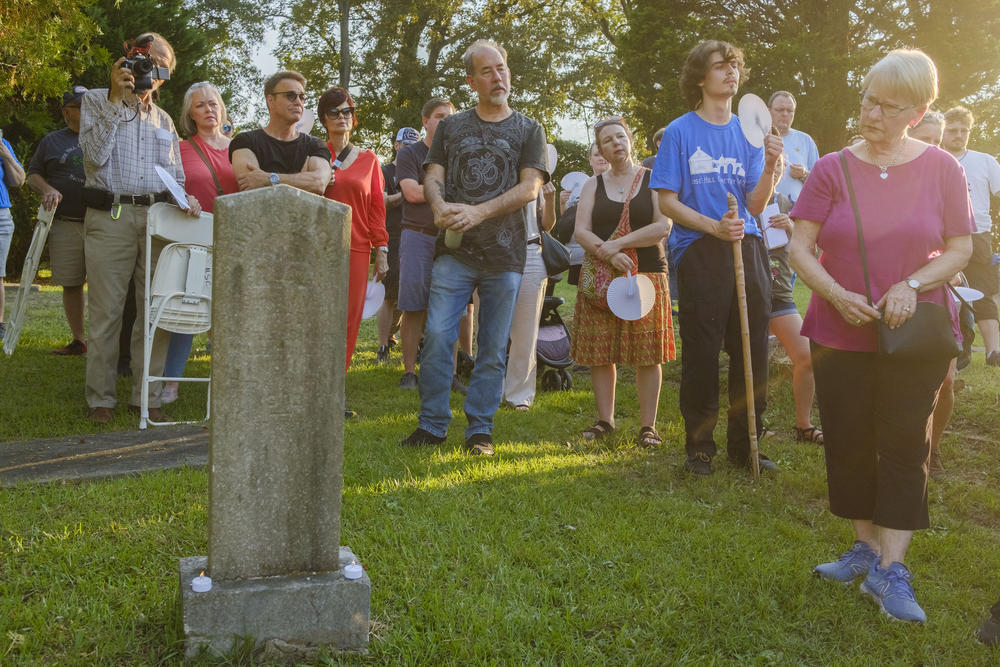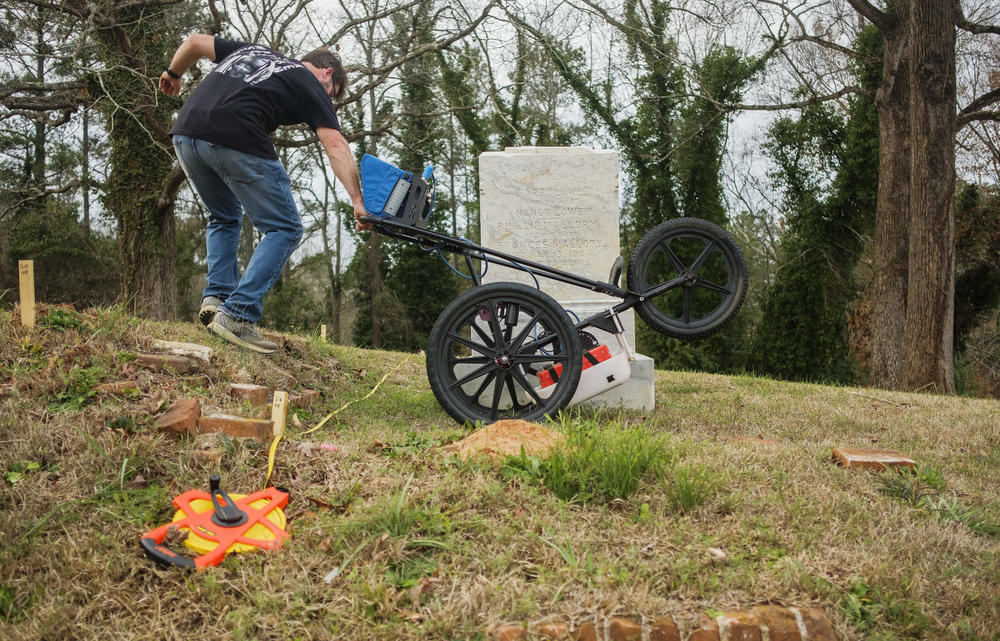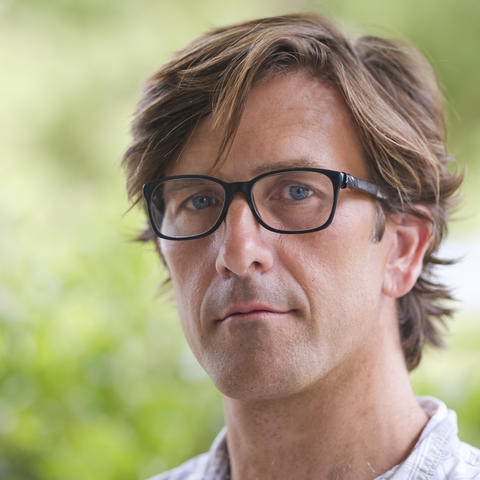
Caption
From left, Yolanda Latimore, Kathleen O’Neal and Brenda Williams lead a tour of the Oak Ridge Cemetery recently in Macon, Ga. New investigation at the African American burial ground, sandwiched between two other better-known historic cemeteries, suggests there may be thousands of unmarked burials in what looks like a grassy and wooded hill.
Credit: Grant Blankenship/GPB News







